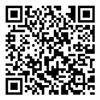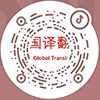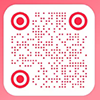Specific Solutions
How Can a Translation Company Deliver Effective Localization?
In today’s globalized economy, simple word-for-word translation is no longer enough. Localization—the adaptation of content to fit the language, culture, and expectations of a target market—has become essential across industries. Whether it's a software interface, marketing slogan, product manual, mobile app, or e-commerce platform, the goal is no longer just accuracy, but resonance.
For translation companies, doing localization well involves much more than linguistic skills. It requires a blend of cultural awareness, workflow management, industry knowledge, and technical support.
Localization Is Not Just Translation
Localization is more than translating text. It's about making the content feel native to the user in a specific region.
For example:
Original Chinese slogan: “为你省心省力”
Literal translation: “Save you worry and effort.”
Localized version (for English-speaking market): “Less hassle. More results.”
The goal isn't just to replicate meaning, but to adapt tone, format, and cultural references in a way that feels natural and engaging. In many cases, effective localization borders on creative rewriting—while still remaining faithful to the original intent.
What Should a Professional Translation Company Do to Localize Well?
1. Work With Native-Speaking, Culturally Fluent Translators
A strong localization team needs more than bilingual capability. It requires cultural fluency—an understanding of how people speak, think, and react in a specific language market.
For example:
Korean content tends to emphasize politeness and hierarchy.
Japanese users value indirectness and subtlety.
Western markets prefer concise, direct language.
An effective translation company ensures that native linguists or deeply bicultural professionals handle localization work, especially for marketing, branding, and user-facing content.
2. Build Consistent Termbases and Style Guides
Terminology consistency is essential—especially in industries like IT, finance, medical, legal, and gaming. Without a controlled vocabulary, translations can become fragmented, confusing, or off-brand.
Professional agencies collaborate with clients to develop a termbase (glossary) and a style guide, which help standardize tone, terminology, and formatting across all deliverables.
3. Provide Technical Capability for Multiformat Content
Localization isn’t always about Word documents. It often involves:
UI/UX strings in XML, JSON, or HTML
Software resource files
Subtitles (SRT, ASS)
App store metadata
Website CMS integration
A good localization partner must be comfortable handling non-standard file types, using CAT tools like SDL Trados, MemoQ, Smartcat, and managing content with markup tags, encoding standards, and preview testing.
4. Follow a Structured Workflow With Clear QA
Because localization often spans multiple languages, formats, and teams, clear project management is essential. A professional translation company should have:
A structured T-E-P workflow (Translate–Edit–Proof)
Version control and terminology tracking
Feedback and revision loops with clients
Optional LQA (Localization Quality Assurance) testing before release
Standardization isn’t about rigidity—it’s about ensuring consistent quality across all touchpoints.
The Goal of Localization: User Trust
A truly successful localization is one the user doesn’t notice—it just works. It feels familiar, trustworthy, and smooth. The words don’t stand out; the message does.
For translation companies, doing localization well means helping clients earn user confidence—no matter the language, region, or platform. It’s not just about translating a product, but making it belong in the world it enters.


















